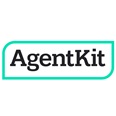Agentic AI Comparison:
AgentKit vs Outlines
Introduction
This report compares two AI agent frameworks: Outlines and AgentKit. Both tools aim to simplify the development of AI agents, but they approach this goal with different philosophies and feature sets. Outlines focuses on providing a declarative approach to defining language models and their behaviors, while AgentKit offers a full-stack solution for building constrained agents with a graph-based architecture.
Overview
Outlines
Outlines is an open-source library that allows developers to define language models declaratively using a simple API. It emphasizes type safety and composability, enabling the creation of complex AI behaviors through the combination of simpler components. Outlines is designed to work with various language models and supports features like few-shot learning, chain-of-thought reasoning, and constrained text generation.
AgentKit
AgentKit is a comprehensive framework developed by BCG X for building constrained AI agents. It utilizes a graph-based architecture where each node represents a specific task or decision point. AgentKit provides a full-stack solution, including a React-based UI, FastAPI backend, and integration with LangChain. It emphasizes reliability and scalability, making it suitable for production-ready agent applications.
Metrics Comparison
Autonomy
AgentKit: 9
AgentKit's graph-based architecture enables the creation of highly autonomous agents. The framework allows for dynamic decision-making and complex workflows, facilitating the development of agents that can operate with minimal human intervention.
Outlines: 7
Outlines provides a high degree of autonomy in defining model behaviors and constraints. Its declarative approach allows for precise control over the AI's actions, but it may require more manual configuration for complex autonomous behaviors.
AgentKit offers greater autonomy potential due to its graph-based architecture, which allows for more complex decision-making processes compared to Outlines' more straightforward declarative approach.
Ease of Use
AgentKit: 7
AgentKit provides a comprehensive solution that includes both frontend and backend components. While this offers a complete package, it may have a steeper learning curve due to its full-stack nature and the need to understand its graph-based architecture.
Outlines: 8
Outlines boasts a simple and intuitive API, making it accessible to developers with varying levels of experience. Its declarative approach and focus on composability contribute to a smooth learning curve.
Outlines edges out in ease of use due to its focused, declarative API, while AgentKit's full-stack approach may require more time to master but offers a more complete solution.
Flexibility
AgentKit: 9
AgentKit's graph-based architecture provides exceptional flexibility in designing complex agent workflows. It allows for dynamic addition and removal of nodes, enabling adaptable agent behaviors. The framework also supports integration with various tools and APIs.
Outlines: 8
Outlines offers high flexibility in terms of model integration and behavior definition. Its composable nature allows for the creation of diverse AI behaviors and supports various language models.
While both frameworks offer significant flexibility, AgentKit's graph-based approach and full-stack integration give it a slight edge in terms of adaptability and extensibility.
Cost
AgentKit: 8
AgentKit is also open-source and free to use. However, its full-stack nature might incur higher infrastructure costs for deployment and scaling. Additionally, it may require more development time due to its comprehensive nature.
Outlines: 9
As an open-source library, Outlines is free to use. The main costs associated with it would be the underlying language model API usage and any infrastructure needed to run the applications.
Both frameworks are cost-effective as open-source solutions. Outlines may have a slight advantage in terms of lower infrastructure requirements, but the difference is minimal.
Popularity
AgentKit: 7
AgentKit, backed by BCG X, has garnered attention in the AI agent development space. Its comprehensive approach and integration with popular tools like LangChain have contributed to its growing popularity.
Outlines: 6
Outlines is a relatively new framework and, while gaining traction, it has not yet achieved widespread adoption in the AI development community.
AgentKit appears to have a slight edge in popularity, likely due to its backing by BCG X and integration with established tools. However, both frameworks are still emerging in the rapidly evolving AI agent development landscape.
Conclusions
Both Outlines and AgentKit offer valuable solutions for AI agent development, each with its own strengths. Outlines excels in providing a simple, declarative approach to defining AI behaviors, making it ideal for developers who prioritize ease of use and quick prototyping. Its focus on type safety and composability makes it a strong choice for projects requiring precise control over language model outputs. AgentKit, on the other hand, stands out with its comprehensive, full-stack approach and graph-based architecture. It offers greater potential for building complex, autonomous agents and is well-suited for production-ready applications. While AgentKit may have a steeper learning curve, it provides more flexibility and scalability for large-scale projects. The choice between the two frameworks ultimately depends on the specific requirements of the project, the developer's familiarity with full-stack development, and the desired level of agent complexity and autonomy.

